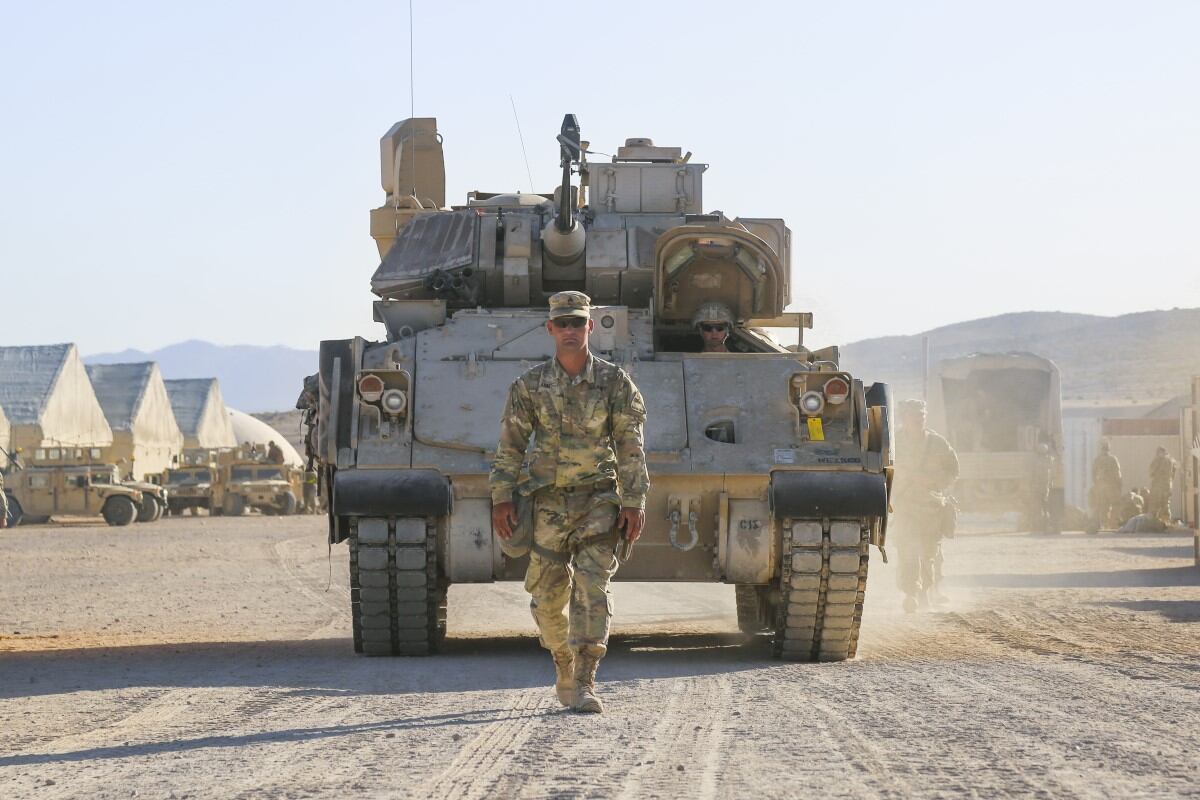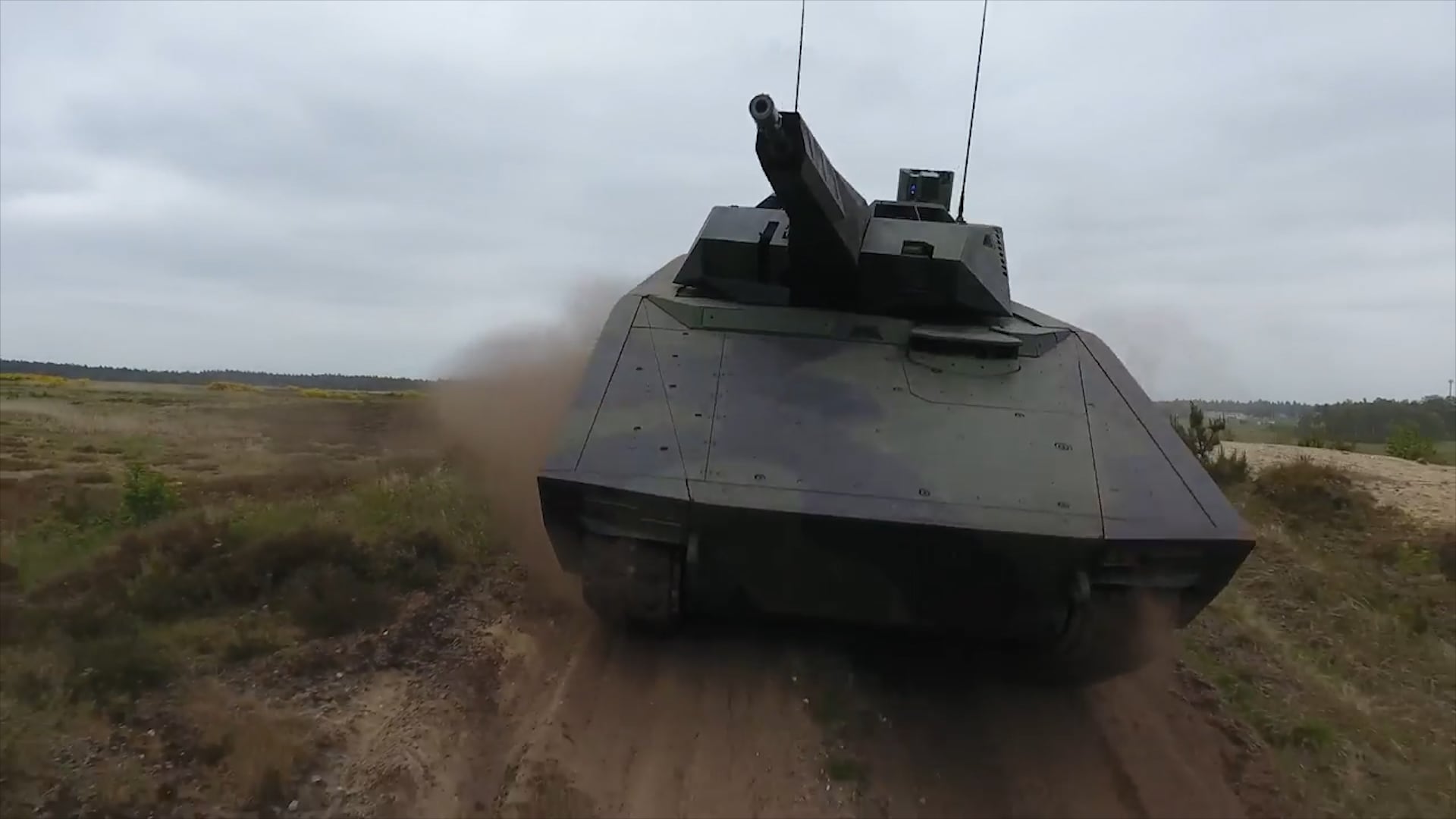WASHINGTON — The bids are in for a chance to build prototypes for the Army’s Optionally Manned Fighting Vehicle that will replace its Bradley Infantry Fighting Vehicle.
Among them is a Raytheon and Rheinmetall team putting forward Rheinmetall’s Lynx 41 Infantry Fighting Vehicle, and General Dynamics Land Systems, which showcased its Griffin III technology demonstrator equipped with a 50mm cannon a year ago at the Association of the U.S. Army’s annual exposition.
RELATED

It is currently unknown if any other teams submitted bids by the service’s set deadline of Oct. 1. None have come forward publicly despite rumors of a dark horse or two.
Absent from the usual brood of combat vehicle manufacturers is BAE Systems. Defense News broke the news earlier this year that the company wouldn’t compete in the OMFV competition.
Textron has joined the Raytheon and Rheinmetall team with plans to, if chosen to build the new vehicle, build Lynx here in the United States at its Slidell, Louisiana, manufacturing facility. Raytheon and Rheinmetall announced a joint venture Oct. 1 — calling it Raytheon Rheinmetall Land Systems LLC — to pursue the OMFV competition.
“General Dynamics Land Systems submitted our OMFV proposal and bid sample to the US Army on 27 September. GD’s bid sample was purpose built to address the desired system lethality, survivability and mobility as substantiation of our response to the Army’s request for proposal,” the company said in a statement sent to Defense News. The company did not provide details on the submission.
GDLS did note, however, that it is proposing a “purpose built vehicle” using technologies from other platforms and “years of investment in advanced capabilities to include a 50mm cannon,” according to the statement.
RELATED

The Army released its request for proposals in March opening a competition to build prototypes. The service plans to choose from the pool of bidders up to two teams to build 14 prototypes each.
The service will choose a winner that will start replacing Bradleys in 2026 that is designed to better operate in future environments that would allow soldiers to maneuver to a position of advantage and “to engage in close combat and deliver decisive lethality during the execution of the combined arms maneuver,” according to an Army statement issued along with the RFP release.
Some of the threshold requirements for OMFV are a 30mm cannon and a second-generation, forward-looking infrared system, or FLIR. Objective requirements are a 50mm cannon and a third-generation FLIR.
Brig. Gen. Ross Coffman, who is in charge of Next-Generation Combat Vehicle (NGCV) modernization efforts, said at the Defense News Conference in September that he is confident the requirements set for OMFV are right and had no plans to change them.
The selected prototypes will go through “rigorous” operational testing and soldier assessments.
The Army plans to downselect to one vehicle for low-rate initial production following the assessments and testing.
Jen Judson is an award-winning journalist covering land warfare for Defense News. She has also worked for Politico and Inside Defense. She holds a Master of Science degree in journalism from Boston University and a Bachelor of Arts degree from Kenyon College.







